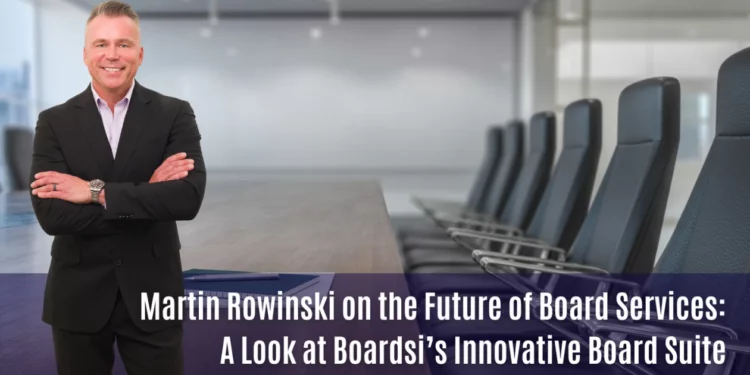Abstract:
Onboarding is a decisive phase that shapes an employee’s experience, impacting engagement, retention, and long-term performance. This paper outlines a validated 30, 60, 90, and 100-day onboarding plan designed for a skills-driven workplace. It leverages personalized learning, targeted mentorship, and technology integration to address the challenges of retention, engagement, and skill gaps. Key recommendations include personalized learning pathways, role-specific mentoring programs, and the integration of technology for seamless adaptation.
Introduction
Laying the Groundwork for Excellence—One Day at a Time
In today’s rapidly evolving professional landscape, organizations are increasingly adopting skills-driven approaches to workforce management. As job roles evolve, onboarding becomes essential for aligning new hires with organizational goals and culture while providing the skills necessary for success. The first 100 days are particularly critical, serving as the foundation for employee engagement, productivity, and retention.
This paper explores how companies can craft an impactful onboarding experience that fosters seamless transitions and accelerates the contribution of new employees. The thesis argues that a combination of personalized learning, targeted mentoring, and technology-driven processes can create a transformative onboarding experience that aligns individual potential with organizational objectives.
The Role of Onboarding in a Skills-Driven Workplace
Effective onboarding ensures that new employees are not only culturally aligned but also equipped with the requisite skills to thrive. According to Bauer (2010), structured onboarding programs can improve retention rates by 50% and productivity by 62%. In a skills-driven environment, where job-specific expertise and adaptability are paramount, onboarding must evolve beyond traditional orientation sessions to focus on continuous learning and skill development.
Key Challenges in Onboarding Today
- Skill Gaps: With technology disrupting traditional workflows, new hires frequently encounter steep learning curves.
- Retention Issues: Gallup (2022) reports that employees who feel disengaged during onboarding are twice as likely to leave within the first year.
- Diverse Workforce Needs: Modern workplaces include multigenerational and multicultural teams, requiring personalized approaches.
| Timeline | Focus Areas | Key Activities | Expected Outcomes |
| Day 1-30 | Orientation, Role Familiarization, and Initial Skill Assessment | Conduct orientation sessions to introduce company culture and values. Assign mentors for role-specific guidance. Administer pre-onboarding surveys to identify skills gaps. Begin modular e-learning tailored to job roles. | An enhanced understanding of company objectives and culture. Identification of skill gaps for targeted learning. |
| Day 31-60 | Personalized Learning Paths and Practical Skill Application | Implement role-specific training modules for hard and soft skills. Schedule regular mentor check-ins. Use AI tools for real-time feedback and progress tracking. Begin small-scale, project-based tasks aligned with the role. | Increased confidence in role-specific tasks. Strengthened mentor-mentee relationships. Consistent progress in skill development. |
| Day 61-90 | Advanced Skill Integration and Performance Evaluation | Transition to advanced training modules with cross-functional collaboration. Conduct mid-point evaluations to review progress and address challenges. Introduce stretch assignments to test the application of skills. | Demonstrated capability in advanced skill application. Enhanced problem-solving and collaboration. Identification of growth opportunities. |
| Day 91-100 | Strategic Alignment and Long-Term Planning | Host strategy alignment workshops to connect individual goals with organizational objectives. Finalize personalized development plans for continuous learning. Conduct a final review with mentors and managers. | A clear understanding of long-term expectations and goals. Strong sense of belonging and readiness for independent contributions. |
Strategies for an Impactful First 100 Days
1. Personalized Learning Paths
A one-size-fits-all onboarding process is no longer effective. Personalized learning plans tailored to individual roles, skills, and aspirations ensure that employees receive relevant training. For example, modular e-learning systems allow new hires to engage with content specific to their job roles.
Case Study
Google’s “Noogler” onboarding program uses customized learning tracks based on job functions. This targeted approach has been credited with improving employee satisfaction and reducing time-to-productivity (Bock, 2015).
Implementation Steps:
- Conduct pre-onboarding surveys to assess skills and knowledge gaps.
- Develop role-specific training modules that include both hard and soft skills.
- Use learning management systems (LMS) to track progress and offer feedback.
2. Role-Specific Mentoring
Mentorship is critical to successful onboarding, providing new hires with guidance from experienced colleagues. Role-specific mentoring ensures contextual learning and fosters professional relationships.
Benefits of Mentorship Programs
- Enhances job-specific knowledge transfer
- Builds a support system, reducing workplace anxiety
- Accelerates cultural integration
Example:
At leading tech company, each new hire is paired with a mentor for the first 90 days. This initiative has shown measurable improvements in employee engagement and early retention.
3. Technology-Driven Integrations
Leveraging technology can streamline onboarding, especially in remote or hybrid setups. Tools like AI-driven chatbots, virtual reality training modules, and centralized dashboards enhance the onboarding experience by providing real-time support and engagement.
Data Insight
A 2023 report by Deloitte found that companies using technology in onboarding saw a 70% increase in new hire satisfaction compared to those relying solely on traditional methods.
Recommended Tools
- AI chatbots for 24/7 query resolution.
- Virtual onboarding platforms for immersive experiences.
- Data analytics to measure onboarding effectiveness.
The Measurable Impact of an Effective Onboarding Program
- Improved Retention Rates: Companies with structured onboarding programs experience 25% lower turnover rates (Glassdoor, 2022).
- Increased Productivity: Employees who undergo skill-specific training during onboarding reach full productivity 34% faster (SHRM, 2021).
- Enhanced Employee Satisfaction: Personalized onboarding correlates with a 40% improvement in employee engagement (Harvard Business Review, 2020).
Conclusion
The initial 100 days in a skills-driven workplace offer a crucial opportunity to empower new hires, foster loyalty, and align individual capabilities with organizational objectives. By incorporating personalized learning paths, role-specific mentoring, and technology-driven solutions, organizations can craft a transformative onboarding experience that drives retention, engagement, and productivity.
Organizations must prioritize the modernization of onboarding processes to remain competitive in the evolving workplace landscape. Leaders should view onboarding not as a mere formality but as a strategic investment in their workforce. By decisively optimizing the first 100 days, companies can ensure long-term success in a skills-driven environment.
Setting the Standard for Workforce Integration
Compunnel Inc., exemplifies this approach by integrating personalized programs, mentorship, and advanced technology to attract and nurture top tech talent, ensuring their seamless alignment with organizational goals. For more information, contact www.compunnel.com
References
- Bauer, T. N. (2010). Onboarding new employees: Maximizing success. SHRM Foundation’s Effective Practice Guidelines Series.
- Bock, L. (2015). Work Rules!: Insights from Inside Google That Will Transform How You Live and Lead. Twelve.
- Gallup. (2022). The State of the Global Workplace.
- Glassdoor. (2022). Onboarding statistics and insights.
- Harvard Business Review. (2020). Personalization at work: Why it matters now more than ever.
- Microsoft. (2021). Employee onboarding practices at Microsoft.
- SHRM. (2021). The ROI of Effective Employee Onboarding.
- Deloitte. (2023). The Digital Transformation of Employee Onboarding.










